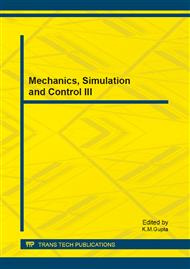p.308
p.312
p.317
p.322
p.327
p.333
p.339
p.347
p.353
Research on Carbon Emission Measurement of Electricity Sector Based on Scenario Analysis Method
Abstract:
Delivering a low-carboneconomy puts ourselves on a path to cut CO2 emission, which is the maincontributor to global warming. Developing low-carbon technology in electricityindustry will play an important role in future since electricity always beingthe biggest emission source. This paper analysis electricity carbon emissions usedscenario analysis method in Baoding, forecasts power load based on economictargets and energy efficiency targets, and analysis CO2 emissions by coal powernew technology application scenarios, and then ,carried out some suggestions onthe electricity sector’s CO2 emission reduction work used the analysis results.
Info:
Periodical:
Pages:
327-332
Citation:
Online since:
August 2013
Authors:
Keywords:
Price:
Сopyright:
© 2013 Trans Tech Publications Ltd. All Rights Reserved
Share:
Citation:


